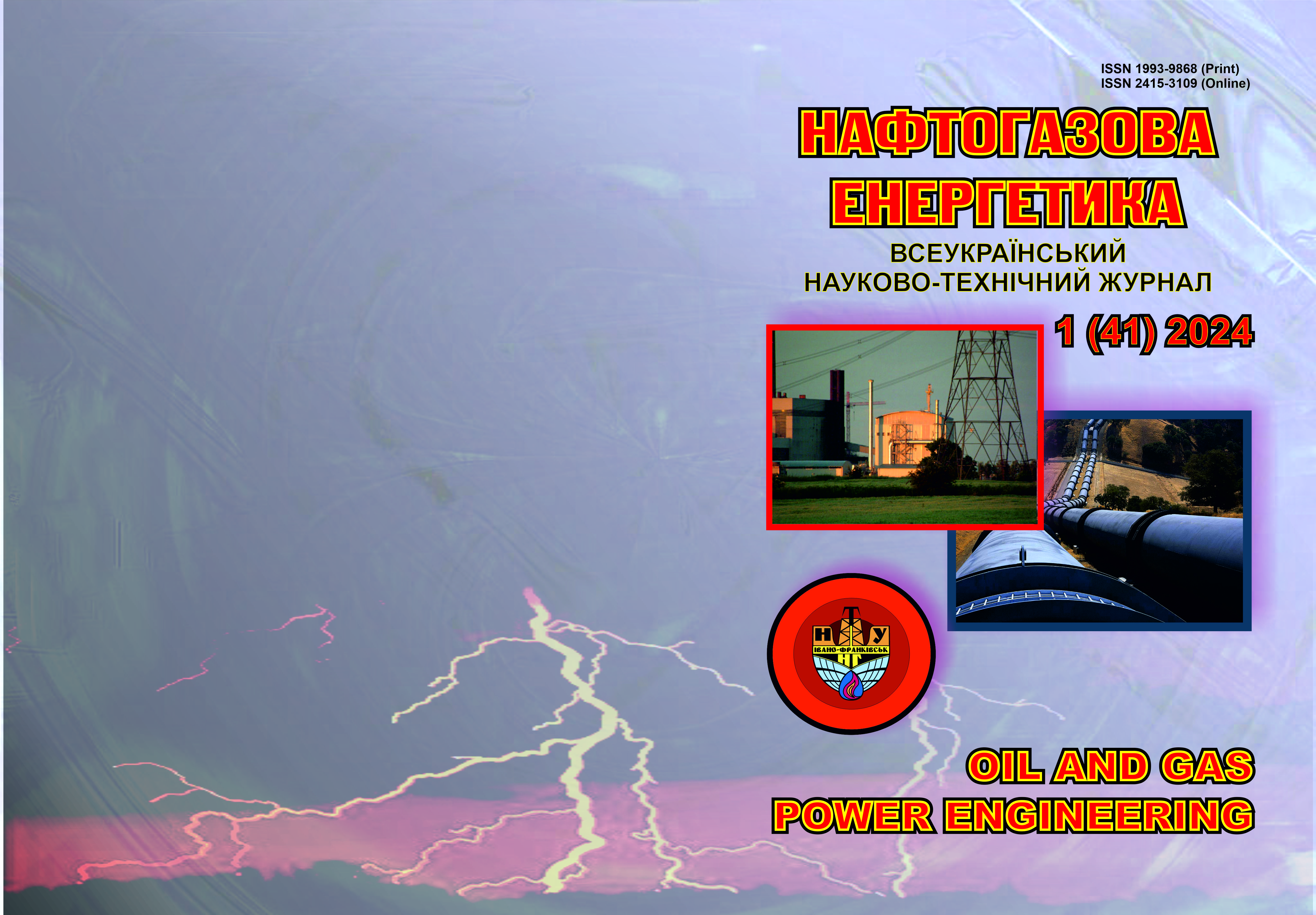DEVELOPMENT OF THE COMPOSITION OF THE GROUTING SOLUTION FOR FIXING WEAKLY CEMENTED ROCKS IN THE BOTTOMHOLE ZONE OF THE FORMATION
DOI:
https://doi.org/10.31471/1993-9868-2024-1(41)-20-28Keywords:
well, reservoir, gas, sandy crust, cement stone, stone strength, gas permeability, filler.Abstract
The negative effects of sand removal from the formation and methods of avoiding the formation of sand crusts at the bottom of wells are considered. The reasons for the destruction of the bottomhole zone during the operation of wells with unstable reservoirs and ways to reduce the flow of sand into the well are presented. The use of chemical methods is one of the most effective methods of preventing sand from entering the well, which is used in Ukraine and abroad. The article analyzes the scientific, technical and patent literature of the developed compositions used for fixing rocks in the bottomhole zone of the formation. The advantages and disadvantages of grouting compositions and their compositions used for rock fixing are presented. Based on the results of experimental studies, the composition of the grouting mortar was developed to create a cement stone in the bottomhole zone of the formation with appropriate values of compressive strength and gas permeability. The results of measurements of the technological characteristics of the grouting mud and the formed cement stone using standard recording equipment are presented. Based on the results of experimental studies, graphical dependences of the compressive strength of cement stone and the permeability coefficient of stone on the content of swollen perlite in the grouting solution were constructed and analyzed.The optimum value of the content of swollen perlite in the solution was determined, which ensures the appropriate values of compressive strength (up to 4 MPa) and gas permeability (up to 3.47 n2) of cement stone. The use of the developed composition makes it possible to increase the flow rate of gas wells with unstable reservoirs and improve their operating conditions by preventing the flow of sand from the formation into the well.
Downloads
References
Oliveira S., Oliveira A., Guimaraes L., Gomes I., Filho O. Analysis of geomechanical behavior of carbonate rock fractures. 54th U.S. Rock Mechanics / Geomechanics Symposium,
June – 1 July, physical event cancelled, 2020.
Kondrat R. M., Dremliukh N. S., Uhrynovskyi A. V. Doslidzhennia protsesu pinoutvorennia z vykorystanniam vodnykh rozchyniv pinotvor-nykh PAR i stabilizatoriv piny. Naukovyi visnyk NHU. 2017. No 3. P. 20–26. [in Ukrainian]
Lezhnev K. Applicationof Discrete Element Method for Modelling Sand Control Systems. Society of Petroleum Engineers. SPE-191525-18RPTC-MS, 2018.
Grigorev. M. Tananykhin. D. Poroshin. M. Sand management approach for a field with high viscosity oil. Journal of Applied Engineering Science. 1. 2020. Р. 64-69.
Salah. M. Abdel-Meguid. A. Abdel-Baky Amr. El-Maghraby. O. A Newly Developed Aqueous-Based Consolidation Resin Controls Proppant Flowback and Aids in Maintaining Production Rates in Fracture-Stimulated Wells. Society of Petroleum Engineers. SPE-181297-MS. 2018. https://doi.org/10.2118/181297-MS.
Banganayi F. Nyembwe. K. Polzin. H. Effects of South African Silica Sand Properties on the Strength Development and Collapsibility of Single Component Sodium Silicate Binders. ARCHIVES of FOUNDRY ENGINEERING. 2017. No 3. Р. 5-12.
Pat. 57223 Ukraina. Sposib zakriplennia pryvybiinoi zony sverdlovyny sylikatyzatsiieiu kolektoriv. No 2002042533; zaiavl. 01.04.2002; opubl. 16.06.2003. [in Ukrainian]
Pat. 45565 Ukraina. Sposib kriplennia pryvybiinoi zony plasta: No 2001010190; zaiavl. 10.01.2001; opubl. 15.04.2002, Biul. No 4. [in Ukrainian]
Sandhu A., Rind T., Kalhoro Sh., Lohano R. Effect on the Compressive Strength of Mortars Using Ground Granulated Blast Furnace Slag as a Partial Replacement of Cement. Journal of Applied Engineering Sciences. 2019/ No 9(2).. Р.183-186. DOI: 10.2478/jaes-2019-0025.
Romero Gomes da Silva Araujo Filho, Julio Cesar de Oliveira Freitas, Renata Martins Braga.. Lightweight oil well cement slurry modified with vermiculite and colloidal silicon. Construction and Building Materials. 2018, 166 (908-915).
Lim J., Raman S., Zain M., Hamid R., Safiuddin M. Autogenous Shrinkage, Micro-structure and Strength of Ultra-High Performance Concrete Incorporating Carbon Nanofibers. Mate-rials. 2019. No 12(2). DOI: 10.3390/ma12020320
Soltanian H., Khojastefar A., Ghorban A. A new cement additive to improve the physical properties of oil well cement and to enhance zonal isolation. Journal of Petroleum Science and Technology. 3 (1). 2013. Р. 31-38. https://jpst.ripi.ir/article_6_7cdef9511893ae06733756d088a32450.pdf
Kazimov. Sh. Ahmed F. Sand Control in the Wells of SOCAR Oilfields. Society of Petroleum Engineers. SPE-177338-RU. 2015. https://doi.org/10.2118/177338-RU.
Pat. №113026 Ukraine, MPK E 21 V33/138. Sklad dlia kriplennia nestiikykh porid kolektoriv / Kondrat R.M., Dremliukh N.S., Kovalchuk Yu.I. No 201606383; zaiav. 13.06.2016; opub. 10.01.2017, Biul No 1. [in Ukrainian]
Portlandtsementy tamponazhni. Tekh-nichni umovy: DSTU B V.2.7-88-99. Chynnyi vid 2000-01-01. K.: Derzhkombudivnytstva, arkhitektury i zhytlovoi polityky, 1999. 12 p. [in Ukrainian]
Downloads
Published
How to Cite
Issue
Section
License
Copyright (c) 2024 Oil and Gas Power Engineering

This work is licensed under a Creative Commons Attribution-ShareAlike 4.0 International License.


.png)






1.png)









